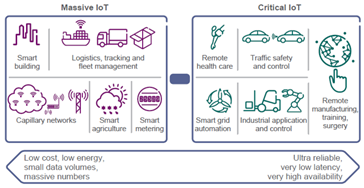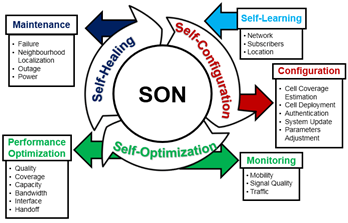
- POSITION
- Prof.
- kimjd@pusan.ac.kr
- HOMEPAGE
- http://inc.pusan.ac.kr
- Lab.
- Intelligence Networking & Computing Lab
1. Research Area
AIoT (AI + IoT) is a good word that represents our research interests and activities in the INC (Intelligence Networking and Computing) LAB. Broadly speaking, our current research subjects can be divided into to 2 categories. The first is wireless communication technologies for IoT services and we are now specifically focusing on LPWA(Low Power Wide Area) technologies. The second is SON(Self-Organizing Network) / KDN(Knowledge Defined Networking) that makes use of AI/ML techniques to control and operate networks efficiently and intelligently. We are carrying out some industry cooperation projects in the fields of “Smart Factory” and “Maritime Communication”
2. Research Overview
* Wireless IoT Communication
There are various IoT services and they have different contexts and different requirements. By and large, we can divide them into two categories, Massive IoT and Critical IoT, as briefly described in the following figure. While there many issues and challenges in each area, intelligent communication resource allocation is critical in both. We are currently developing resource allocation algorithms using optimization and deep-reinforcement learning.

* SON/KDN
A self-organizing network is an automation technology designed to make the planning, configuration, management, optimization and healing of network simpler and faster by making use of AI/ML techniques. Developing and applying AI/ML techniques for network operation and control is far from easy, as it is hard to get proper datasets and more hard to evaluate and verify a developed method. We are cooperating with our university ITC center closely and acquired a lage amount of Wi-Fi network operation data. We are working on the dataset in the expectation of increasing overall performance and reliability of the campus Wi-Fi network.

* Smart Factory
Today, IoT, digital manufacturing, and cyber-physical systems are mentioned as core technologies for defining industry 4.0. In order to advance the old factory systems, research is actively underway to track processes/x-x-objects and maintenance of the factory by linking each process/data with a cloud platform.
- Condition Diagnosis and Predictive Maintenance
- Process Monitoring and Product Tracking
- x-x-object Detection and Intrusion Detection
- Machine Learning-enabled Smart Factory
3. Research Achievements
* Publications
- Dong-Hyun Kim, Jong-deok Kim, “Unequal Loss Protection Scheme using a Quality Prediction Model in a Wi-Fi Broadcasting System,” International Journal of Distributed Sensor Networks, Vol 15, No. 6, doi:10.1177/1550147719854247, Jun. 2019
- Seunggyu Byeon, Sejin Park, Hyung-Yoon Seo and Jong-deok Kim, “CLOF: Contribution Level Based Opportunistic Flooding for Multihop Wireless Networks,” International Journal of Distributed Sensor Networks, Vol 14, No. 5, doi: 10.1177/15501477187782001, May. 2018.
- Yang, Seung-Chur, and Jong-Deok Kim. “A Hybrid Measurement Approach to Medium Occupied Time for Radio Resource Management in IEEE 802.11 Networks.” International Journal of Distributed Sensor Networks, Vol 11, No 5, doi:10.1155/2015/719671, May 2015
- Hyung-Yoon Seo, Byung-Jun Bae and Jong-deok Kim, “An Efficient Hierarchical Error Recovery Method for Hybrid Broadcast / Communication Networks,”, IETE Journal of Research, Vol. 61, No. 5, pp. 562~570, April 2015
- Hyun-sung Park, Jong-Deok Kim, “Wi-Fi-based modeling and hybrid routing scheme for delay-tolerant public bus network,” Wireless Communications and Mobile Computing, Vol. 15, No. 7, May. 2015
- Chae-Seok Lee, Dong-Hyun Kim and Jong-Deok Kim, “An Energy Efficient Active RFID Protocol to Avoid Overhearing Problem,” IEEE Sensors Journal, Vol. 14, No. 1, pp. 15-24, Jan. 2014
- Dong-Hyun Kim, Jong-Deok Kim, “A collision avoidance scheme for the synchronized broadcast packets in a multi-AP Wi-Fi broadcasting system,” Multimedia Tools and Applications, Vol. 69, No. 3, pp. 643-659, April 2014